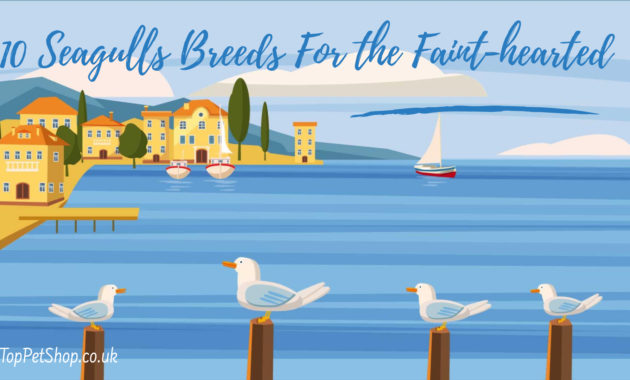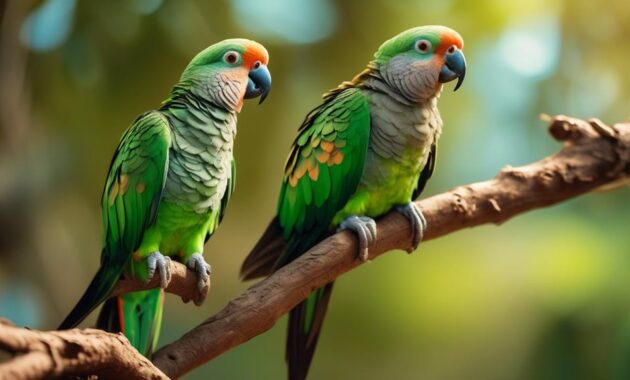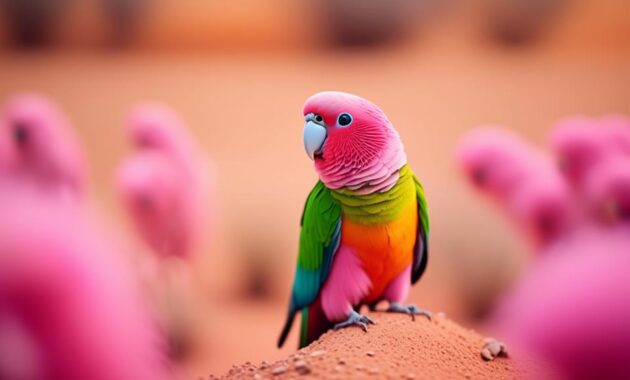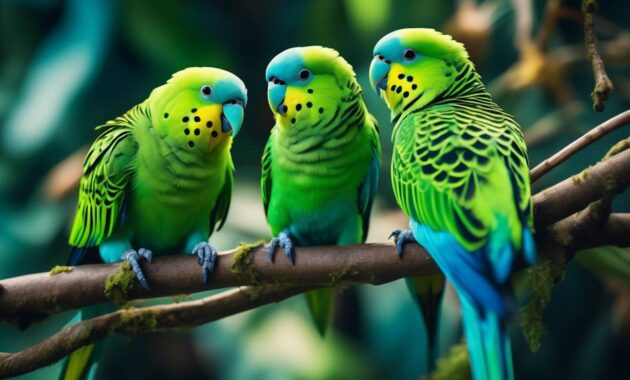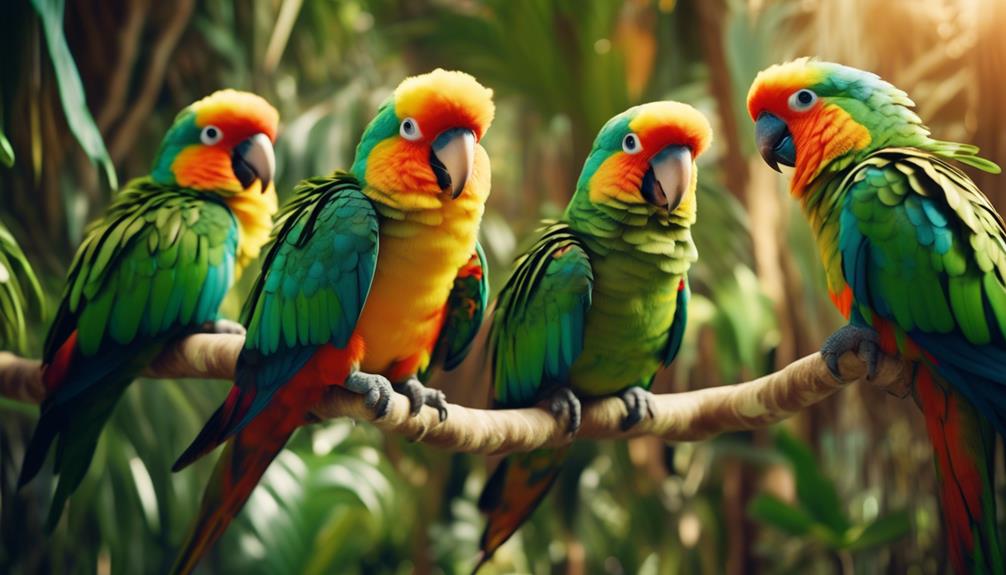
By a twist of fate, a chance encounter with the exotic Mulga Parrots will transport you to a world of vibrant colors, melodic chirps, and a thriving habitat. As you witness these mesmerizing creatures in their natural surroundings, you will be captivated by their striking appearance and enthralled by their enchanting melodies.
But there is much more to these parrots than meets the eye. Curious to know about their unique characteristics and how they adapt to their arid habitats? Wondering how to care for these magnificent birds?
Prepare to embark on a journey that will unravel the mysteries of the Mulga Parrots, leaving you eager to learn more about their remarkable existence.
Key Takeaways
- Mulga Parrots are approximately 11 inches in length and have a slender figure with a long tail. Males are bright green and turquoise with yellow and red markings, while females have a brownish olive head and orange and yellow markings.
- Mulga Parrots can live for 12+ years with proper care, a balanced diet, and social interaction. They are hardy birds that adapt easily to drier regions and thrive in arid habitats.
- Mulga Parrots belong to the parakeet species and are a unique branch of Australian parakeets. They have distinct physical traits that set them apart from other Australian parakeets.
- Mulga Parrots have natural calls consisting of soft chirps and twittering, and they can also mimic sounds and engage in melodic chit-chat. They are suitable pets for apartment living with enough space.
Physical Characteristics of Mulga Parrots
With their slender figures, incredibly long tails, and vibrant feathers, Mulga Parrots captivate observers with their exotic appearance.
These parrots are approximately 11 inches in length and weigh around 3 ounces, making them relatively small in size.
The males and females of this species have distinct physical differences. Males are mostly bright green and turquoise with yellow and red markings, while females have a brownish olive head and orange and yellow markings. The combination of these colors creates an enchanting mix of hues that adds to their allure.
The Mulga Parrot’s physical characteristics make it stand out among other parakeet species, and its vibrant feathers are one of its main attractions.
Vibrant Colors of Mulga Parrots
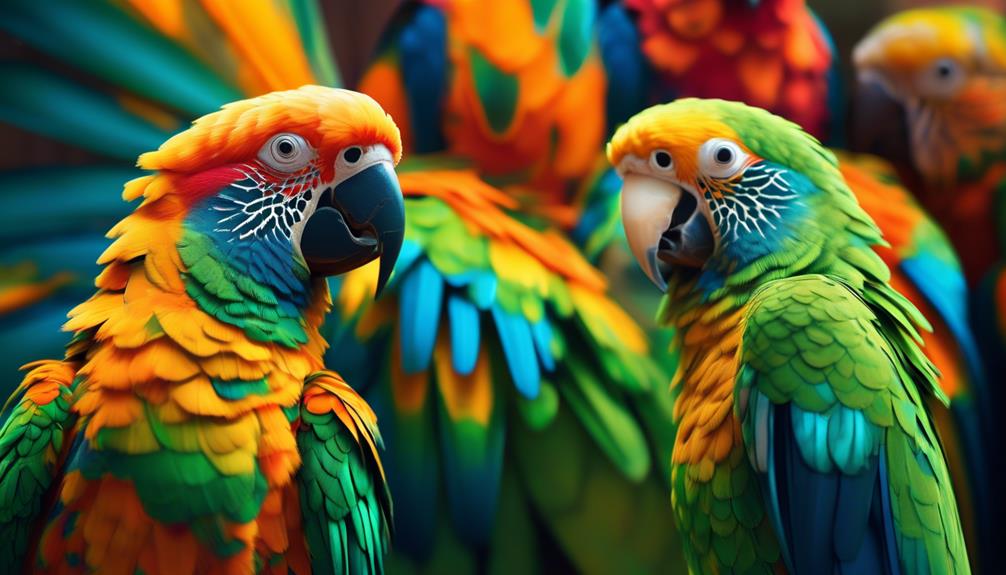
Mulga Parrots captivate observers not only with their slender figures and incredibly long tails but also with their vibrant feathers, which showcase a stunning array of colors. The exotic appearance of Mulga Parrots is truly a sight to behold.
Here are three reasons why their vibrant colors evoke a sense of wonder and awe:
1) Brilliant Greens and Turquoises: The males of Mulga Parrots are adorned with bright green and turquoise feathers. These striking colors create a vivid and eye-catching display, mesmerizing anyone lucky enough to witness them in person.
2) Splashes of Yellow and Red: Adding to their vibrant palette, Mulga Parrots also feature yellow and red markings. These warm hues provide a delightful contrast to the greens and turquoises, enhancing the overall visual appeal of these magnificent birds.
3) Enchanting Mix of Hues: The combination of greens, turquoises, yellows, and reds creates a harmonious blend of colors that’s truly captivating. The vibrant feathers of Mulga Parrots are a testament to the beauty and diversity found in nature, leaving observers in awe of their extraordinary appearance.
Lifespan of Mulga Parrots
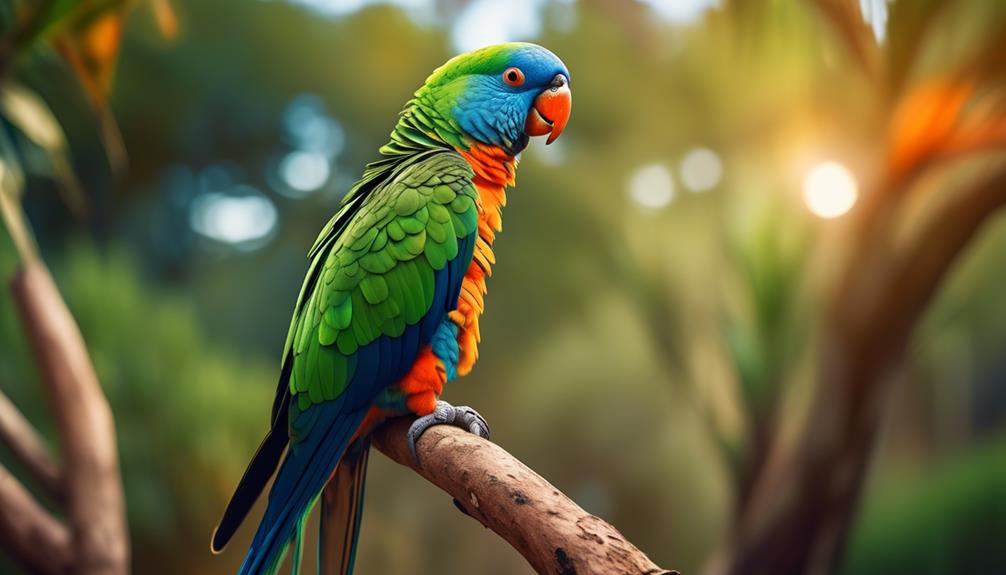
Mulga Parrots have a lifespan of 12+ years, which can be extended with proper care, a balanced diet, and social interaction. These vibrant parrots are known for their stunning colors and melodic chirps. To provide a clearer understanding of their lifespan, the following table highlights the key factors that contribute to their longevity:
| Factors | Lifespan Impact |
|---|---|
| Proper care | Ensuring a clean and safe environment |
| Balanced diet | Providing a variety of nutritious foods |
| Social interaction | Engaging in regular interaction and stimulation |
Adaptability of Mulga Parrots
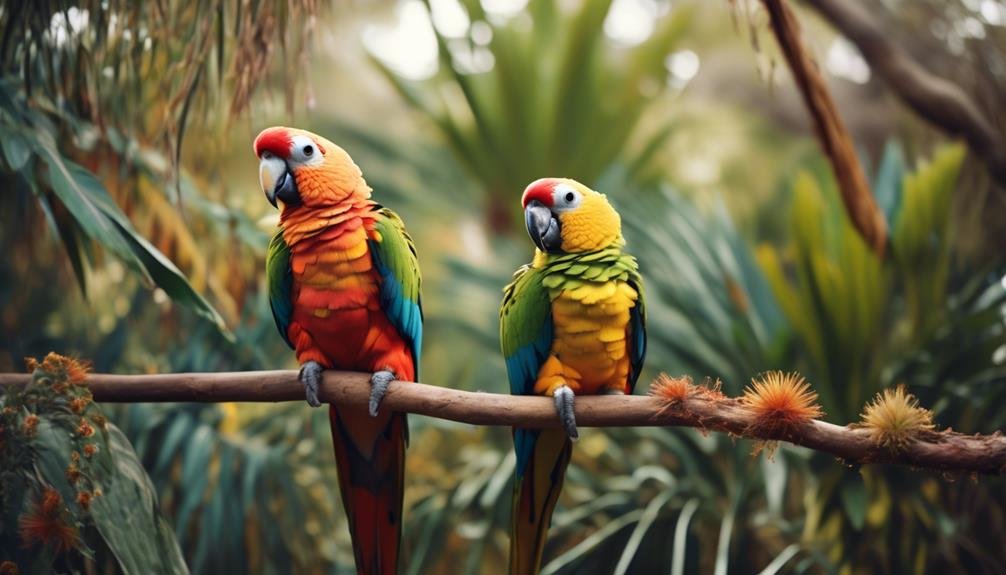
After establishing the lifespan of Mulga Parrots, it’s important to explore their remarkable adaptability to various environments. These vibrant birds possess a unique set of qualities that allow them to thrive in different habitats. Here are three remarkable aspects of their adaptability:
- Resilience: Mulga Parrots are known for their ability to withstand and flourish in drier regions of Australia. Their hardiness and adaptability to arid conditions make them strong and healthy.
- Versatility: These birds aren’t bound by a specific habitat or climate. They can easily adapt to various environments, making them versatile and adaptable companions.
- Survival skills: Mulga Parrots have developed excellent survival skills, enabling them to find food and water sources even in challenging conditions. Their ability to adapt and survive in different environments showcases their exceptional resilience.
Species and Classification of Mulga Parrots
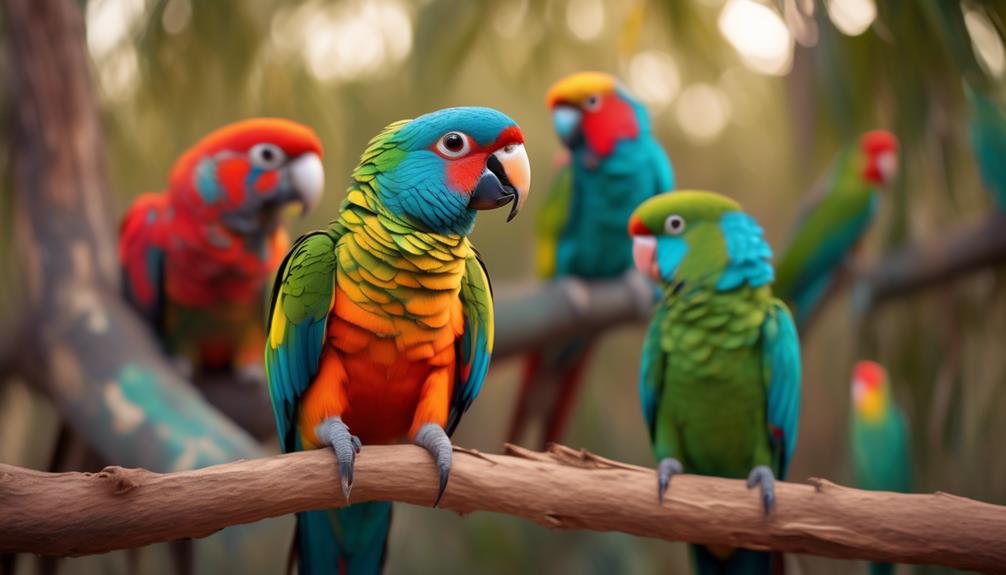
Mulga Parrots belong to the parakeet species and are a unique branch of Australian parakeets, showcasing distinctive physical traits that set them apart from other birds in the region. While they share some similarities with other Australian parakeets, Mulga Parrots have their own distinct characteristics.
These vibrant birds have a slender figure, measuring approximately 11 inches in length and weighing around 3 ounces. Males display bright green and turquoise feathers with yellow and red markings, while females have a brownish olive head and orange and yellow markings. Their exotic appearance is one of the main attractions of Mulga Parrots.
Despite their unique traits, Mulga Parrots are a non-threatened species and continue to thrive in their natural habitat in the drier regions of Australia.
Vocalizations of Mulga Parrots
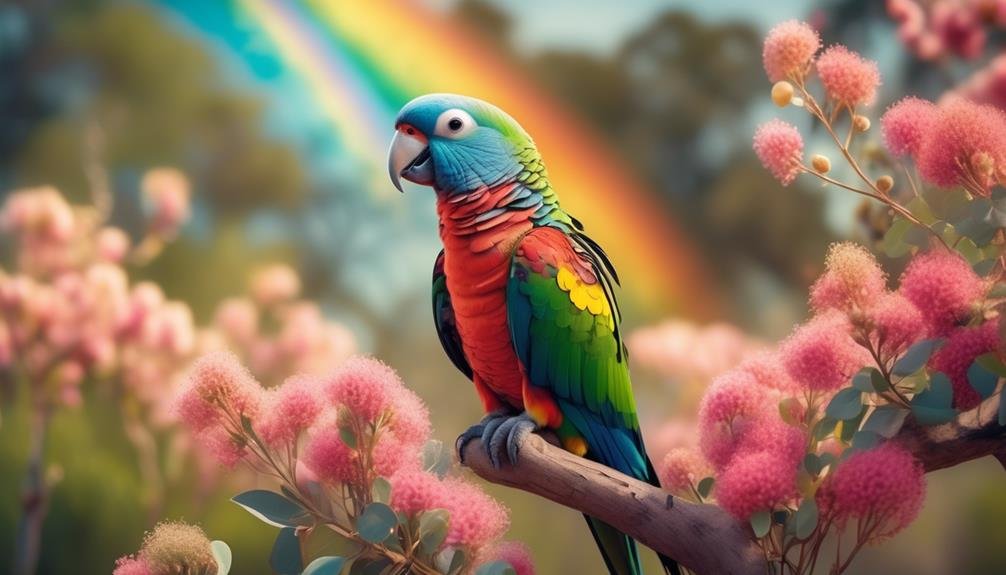
The vocalizations of Mulga Parrots are characterized by soft chirps and twittering, creating a melodic and enchanting atmosphere. These delightful sounds evoke a sense of tranquility and joy in anyone who’s the pleasure of hearing them.
The gentle chirping of the Mulga Parrots brings a sense of peace and serenity to their surroundings. It’s as if their melodic tunes transport you to a world of harmony and beauty.
The twittering of these parrots adds a playful and lively element to their vocalizations, filling the air with a sense of excitement and enchantment. Their charming and melodious calls create an atmosphere that’s truly captivating and mesmerizing, making Mulga Parrots a delight to listen to.
Natural Calls of Mulga Parrots
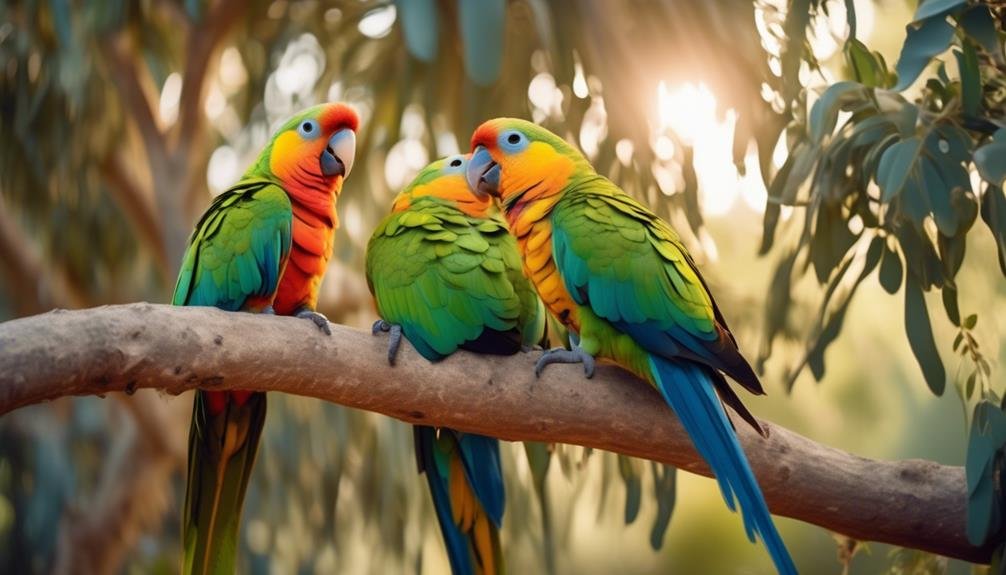
As the enchanting melodies of the Mulga Parrots fill the air, their natural calls captivate listeners with their soft chirps and twittering. These calls aren’t too noisy, adding a soothing and peaceful atmosphere to their surroundings.
The Mulga Parrots’ vocalizations consist of gentle chirping sounds that blend harmoniously with their vibrant colors and graceful movements. Although they aren’t known for their mimicry abilities, Mulga Parrots can engage in melodic chit-chat and respond vocally when happy, such as when being cuddled.
With enough space, they can even be suitable pets for apartment living, as their natural calls aren’t disruptive.
Mimicry and Vocal Interactions of Mulga Parrots
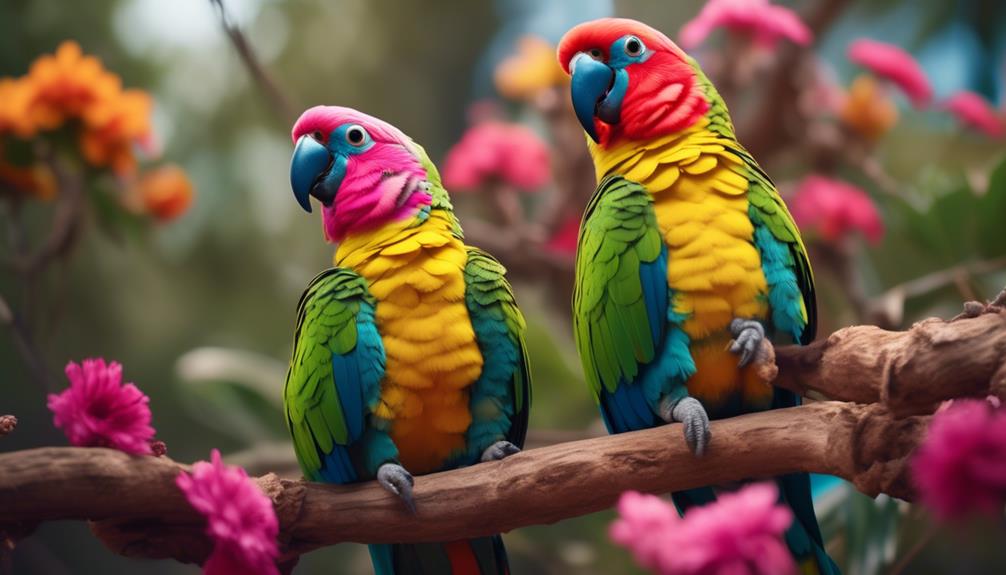
Engaging in melodic chit-chat and responding vocally when happy, Mulga Parrots showcase their ability to mimic sounds and interact through their vibrant vocalizations. These vocal interactions not only serve as a means of communication but also add to the charm and allure of these exotic birds.
Here are three fascinating aspects of their mimicry and vocal interactions that evoke an emotional response in the audience:
1) Imitating Human Speech: Mulga Parrots have been known to mimic human speech, surprising and delighting their owners with their ability to mimic words and phrases. This unique talent creates a bond between the parrots and their human companions, bringing joy and amusement to their daily interactions.
2) Mimicking Other Bird Calls: Mulga Parrots have a remarkable ability to mimic the calls of other bird species. This mimicry adds depth and variety to their vocal repertoire, creating a symphony of sounds that’s both captivating and enchanting.
3) Expressing Happiness and Contentment: When Mulga Parrots are in a state of happiness or contentment, they express it through their vocalizations. Their melodic chirps and joyful calls serve as a reflection of their well-being, bringing a sense of warmth and happiness to those who’ve the pleasure of hearing them.
Through their mimicry and vocal interactions, Mulga Parrots demonstrate their intelligence, adaptability, and ability to connect with their surroundings, making them truly remarkable creatures.
Habitat of Mulga Parrots
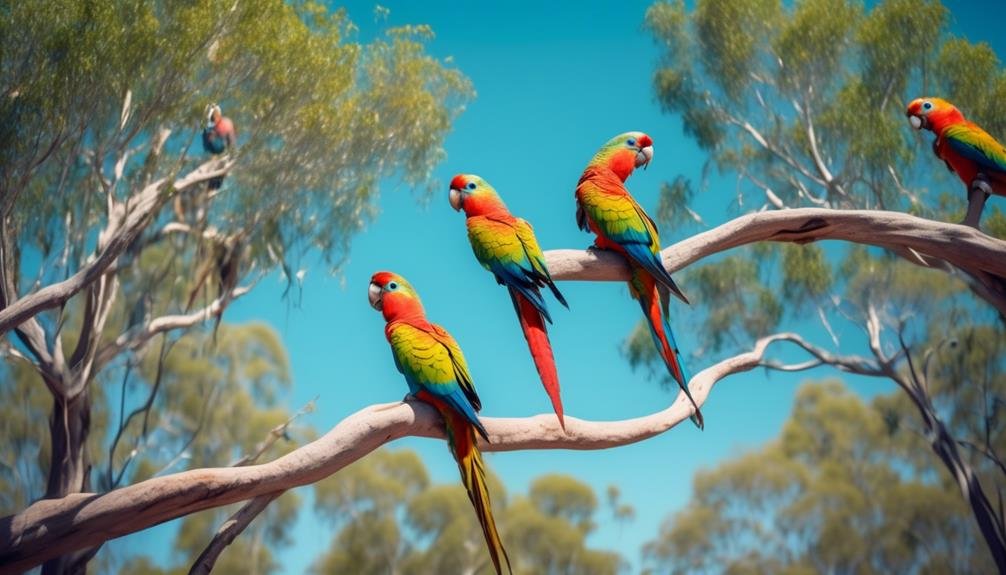
After showcasing their remarkable mimicry and vocal interactions, it’s important to understand the natural habitat in which Mulga Parrots thrive. These exotic birds are found in the drier regions of Australia, specifically in arid and semi-arid areas. They’re well adapted to these environments and can thrive in conditions where other species struggle.
Mulga Parrots are often seen in mulga woodlands, which are characterized by low scrub and trees. These woodlands provide the birds with suitable nesting sites and a variety of food sources, including seeds, fruits, and insects. The dry climate and sparse vegetation of their habitat also contribute to their vibrant colors, making them truly stunning to behold.
Conservation efforts are crucial to preserving the habitat of Mulga Parrots and ensuring their continued survival.
Care for Mulga Parrots
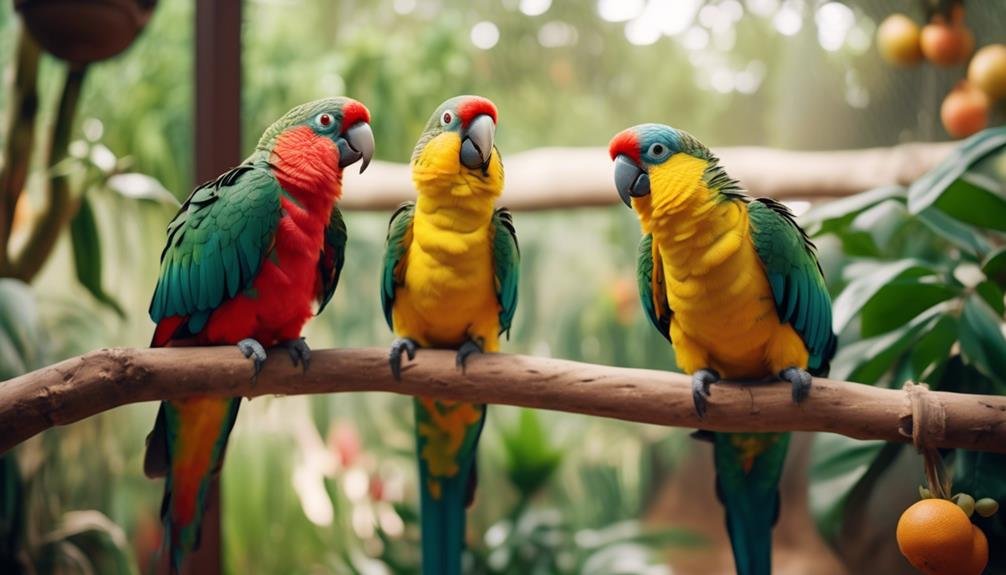
Mulga Parrots require proper care, a balanced diet, and regular social interaction for their overall well-being. To ensure the happiness and health of these vibrant birds, here are three essential aspects of caring for Mulga Parrots:
- Spacious Living Environment: Mulga Parrots need a roomy cage and plenty of free space to move around and exercise. Providing them with a large and stimulating environment will contribute to their physical and mental well-being.
- Nutritious Diet: A balanced diet is crucial for Mulga Parrots’ health. They should be fed a variety of fresh fruits, vegetables, seeds, and pellets. Ensuring they receive proper nutrition will help support their vibrant colors and overall vitality.
- Social Interaction: These parrots are highly social creatures that thrive on interaction with their human caregivers. Regular socialization, such as talking, playing, and cuddling, is essential to keep them mentally stimulated and prevent loneliness.
Mulga Parrots as Pets
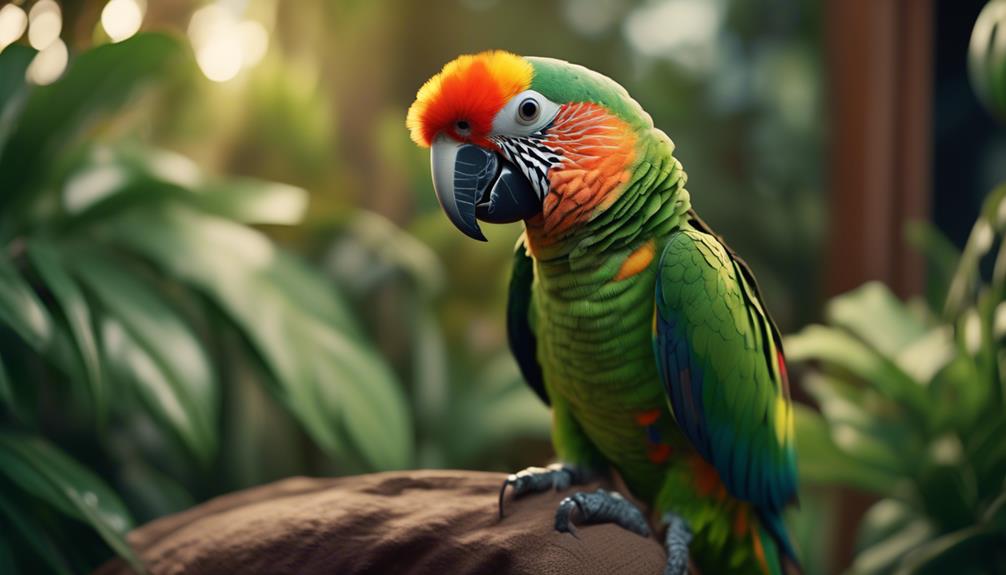
Many people find Mulga Parrots to be delightful pets due to their vibrant colors and charming personalities. Mulga Parrots make wonderful companions for those who appreciate their beauty and enjoy their playful nature. They are relatively low maintenance and can adapt well to apartment living with enough space. Here is a table summarizing the key factors to consider when keeping Mulga Parrots as pets:
| Factors to Consider |
|---|
| Size: 11 inches in length and 3 ounces in weight |
| Lifespan: 12+ years with proper care |
| Cage: Roomy cage required |
| Diet: Balanced diet needed |
| Social Interaction: Important for their well-being |
Conservation Status of Mulga Parrots
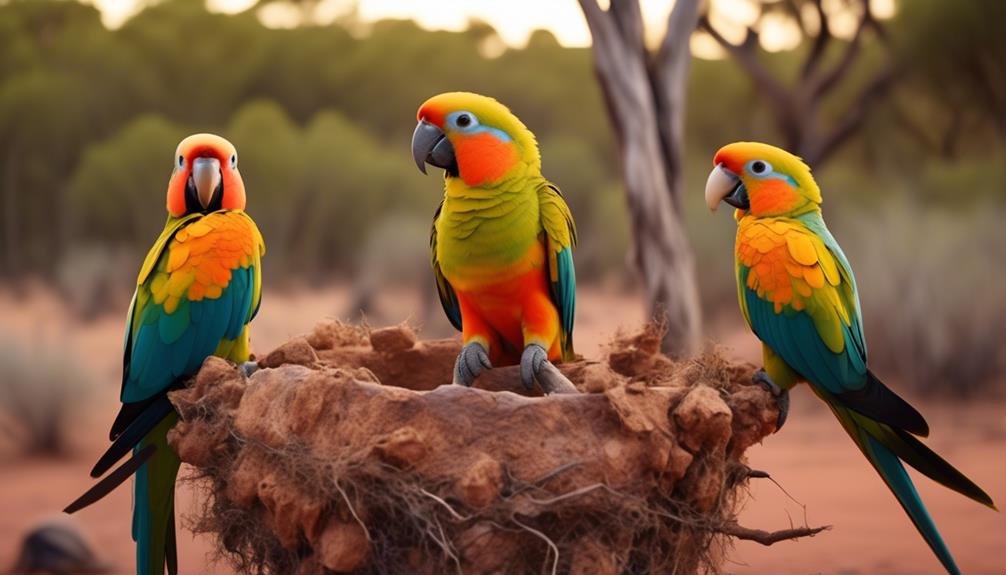
As pet owners appreciate the delightful companionship of Mulga Parrots, it’s important to consider the conservation status of these vibrant and playful birds.
- Vulnerable Species: Mulga Parrots are classified as a vulnerable species due to habitat loss and degradation caused by human activities such as land clearing and agriculture. This classification raises concerns about their long-term survival and underscores the need for conservation efforts.
- Importance of Conservation: Mulga Parrots play a crucial role in maintaining the balance of ecosystems in their native habitat. Their presence helps with pollination and seed dispersal, benefiting the overall biodiversity of the region. Protecting their habitat and ensuring their survival is vital for the health of the environment.
- Individual Responsibility: As owners of Mulga Parrots, it’s essential to be responsible in their care and take steps to support their conservation. This includes providing a safe and enriching environment, advocating for habitat protection, and supporting organizations working towards the preservation of these beautiful birds.
Frequently Asked Questions
Are Mulga Parrots Loud and Noisy?
Mulga Parrots are not too noisy. They have natural calls consisting of soft chirps and twittering. While they can mimic sounds and engage in melodic chit-chat, they are generally suitable for apartment living.
How Long Do Mulga Parrots Live in Captivity?
Mulga Parrots live for 12+ years in captivity when provided with proper care, a balanced diet, and social interaction. Their adaptability and hardiness contribute to their longevity, making them suitable pets.
What Are the Physical Differences Between Male and Female Mulga Parrots?
Male and female Mulga Parrots have distinct physical differences. Males are mostly bright green and turquoise with yellow and red markings, while females have a brownish olive head and orange and yellow markings.
Do Mulga Parrots Require a Specific Type of Diet?
Mulga Parrots require a specific type of diet to stay healthy and thrive. A balanced diet consisting of fresh fruits, vegetables, seeds, and pellets is essential for their well-being.
Can Mulga Parrots Be Found in Regions Other Than Australia?
Mulga Parrots can only be found in the drier regions of Australia. Their habitat and adaptability are suited to these arid regions, making them strong and healthy in their natural environment.
How Do Black Lories Compare to Mulga Parrots in Terms of Habitat and Traits?
Black lories and Mulga parrots differ in their captivating black lory traits. While black lories thrive in rainforests and coastal areas, Mulga parrots prefer arid woodlands and scrublands. Black lories are known for their intelligence and vocal abilities, while Mulga parrots are appreciated for their vibrant plumage and adaptability.
Conclusion
In conclusion, Mulga Parrots are truly remarkable creatures that captivate with their vibrant colors, melodic chirps, and ability to thrive in arid habitats. With their unique physical characteristics and adaptability, these parrots have carved out a niche in the avian world.
Whether in their natural habitat or as pets, Mulga Parrots bring joy and beauty to those who appreciate their splendor. However, as their conservation status is of concern, efforts must be made to protect and preserve these exotic birds for future generations to enjoy.

